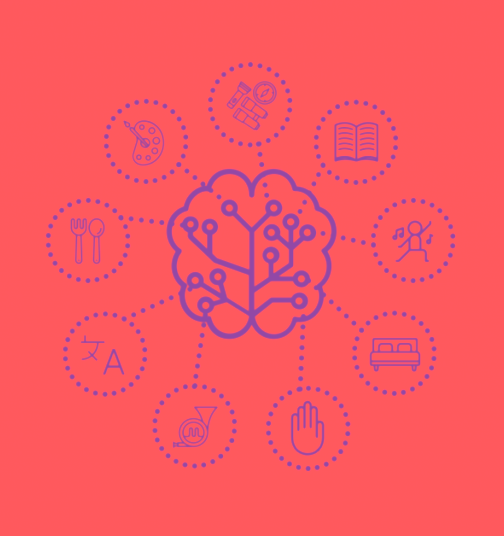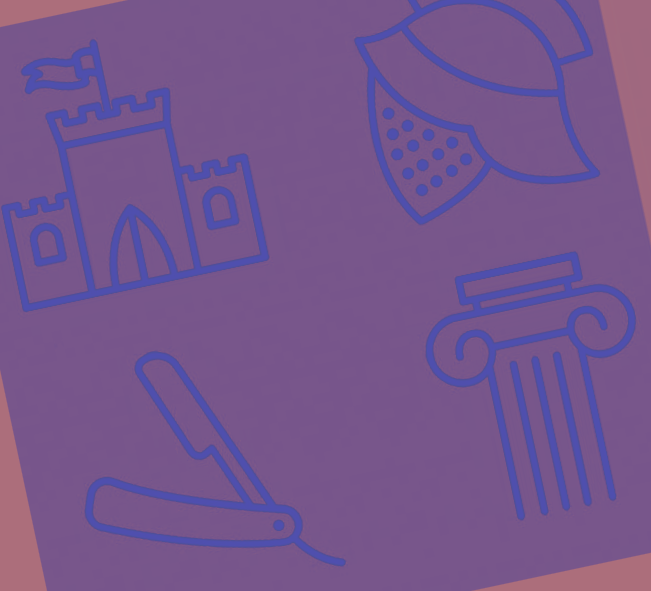NEUROPLASTICITY
NEUROPLASTICITY - REWIRE YOUR BRAIN
A comprehensive guide to the workings of Neuroplasticity - written for gruum.com

Slide title
To see the article in it's full glory, follow the link at the bottom!
Button
February isn’t our favourite month. It’s cold, the daylight is nothing but a tease that fades as quickly as it appears, your new year's resolutions feel like a lifetime ago, and making the most of the year ahead can seem like a somewhat daunting task.
Welcome to the world of Neuroplasticity, my friend.
To put it simply, Neuroplasticity is the idea that you can rewire your brain for the better by introducing your neurons to certain stimulating activities.
Neuroplasticity can help you to break away from old habits, deal with trauma (both physical and mental), prevent and ease neurodegenerative diseases, and generally improve your cognitive function. Sound good? That’s because it is!
The Science of Rewiring your Brain
Neurons are specialised nerve cells in the brain that transmit nerve impulses; they’re responsible for the processing and transmitting of information, so they’re kind of a big deal. Neurons connect with each other through synapses; tiny junctions which facilitate the passing of information from one neuron to another, in the form of an electrical impulse.
We are all born with a huge amount of synapses in our brains. When we’re toddlers crawling about, picking up things we shouldn’t, loads of information is being transmitted to every neurological corner of our brains.
But as we get older and our brains develop, these synapses lessen. This is called ‘synaptic pruning’ and is, essentially, a response to your brain creating default connections based on your reactions to your environment at a young age.
For example, you might use your right hand more than your left hand for certain activities. It’s not because your left hand couldn’t physically do these activities, it’s just because the right hand has become your default one.
This is because the synaptic connections to the right hand are greater than those to your left hand. At some point, you used the right a little more than the left, so when it came to synaptic pruning, the connections in your brain were kept with the neurons and synapses linked to your right hand.
Neuroplasticity involves increasing of synaptic connections in the brain. It’s basically introducing new activities to your routine, that will train your brain to be able to do things differently. This can be handy (no pun intended) in day-to-day life, but the long-term effects are the real bonus.
By making just a few alterations to your daily routine, you can wake up your brain and improve your cognitive function. It can also be extremely helpful when; recovering from, or dealing with, trauma; the prevention, and treatment, of neurodegenerative diseases; improvement of memory; as well as aiding with anxiety and depression.
Growth Mindset
Before you try your hand at some of the techniques that can aid with neuroplasticity, you need to be in the right mindset.
It’s important to give yourself a proper chance and stay open to new things. If you assume you can’t do something, you’ll never be able to, but if you try, you might find out you can.
It’s also important to remember that every activity suggested will help your brain regardless of how good you are at it. No-one’s expecting you to be the best, and no-one’s judging you, enjoy yourself!
Techniques
Non-dominant hand exercises
Try using your non-dominant hand to simple day-to-day tasks. This can be as small as simply drinking your tea with your other hand, or using your mouse with your other hand. The more you practice, the better you’ll get; and often you’ll find that your productivity improves, as you’re more focused on your activity!
Straighten up
Every time you become aware of your posture, straighten up. This might seem small, but consciously changing your posture can do more than you think.
Read some fiction
When you read fiction you’re tantalising and waking up your imagination - an extremely powerful and useful part of your brain.
Studies have shown that reading fiction increases synaptic connections, which remain even after you’ve finished your novel. Reading fiction allows you to explore different mindsets and perspectives, which can help your brain figure out how to deal with complex social situations and relationships.
A few suggestions to start you off:
The Beach
- Alex Garland (dark adventure fiction)
The End of Mr Y
- Scarlett Thomas (dark sci-fi, great scientific references/brilliant plot)
There are Little Kingdoms
- Kevin Barry (short stories)
The Third Policeman
- Flann O’Brien (absurdist adventure fiction)
Nation
- Terry Pratchett (dark adventure with amazing imagery, slightly philosophical)
Post Office
- Charles Bukowski (Very sweary, very honest, not for the faint hearted!)
The Gospel According to Blindboy
- Blindboy Boatclub (short stories)
Memory training
Memory training - or using mnemonic devices - promotes connectivity in the prefrontal parietal network of the brain, and obviously improves your memory.
One of the most popular methods is the method of loci, which involves visualising a repeated route in your day to day life and placing the information you want to remember at different points along the route, then ‘walking through’ in your mind.
This is also a great technique for people with depression to access happy memories - place triggering items at points along the route to remind you of the good things in life.
Another great method is to practice using acronyms to remember things. Or if you need to remember a seemingly random group of letters of digits, you can form them into a linear story. For example, EADGBE are the strings on a guitar with standard tuning, from top to bottom. A way to remember this is "Eddie Ate Dynamite Good Bye Eddie".
Expand Your Vocabulary
Studies have shown that broadening your linguistic horizons increases auditory and visual brain processes as well as memory function. An increased vocabulary is proven to go hand in hand with good cognitive function, so flex your brain muscles and begin acquiring a plethora of enthralling new terms!
Reading fiction can help enormously with this, so you’ve got a two-birds-one-stone situation there. As well as this, you could use a dictionary or a random word generator to introduce some unusual terminology to your daily life.
Pick a word a day to learn and try to use it in everyday conversation - you’ll have some interesting chats and you’ll have 365 more words in your brain by the end of the year!
Intermittent fasting
Studies by the Society for Neuroscience have shown that intermittent fasting can increase promote neuron growth and strengthen synaptic connections. There’s also a lot of other proven benefits to intermittent fasting including; reducing your chances of neurodegenerative diseases; promoting recovery after a stroke or traumatic brain injury; lowering blood pressure and resting heart rate; and reducing the risk of diabetes, cancer and cardiovascular diseases.
This works by causing a metabolic shift in your body, due to the lowering of your body’s leptin levels - the hormone produced by fat. Your brain then receives a chemical message which in turn triggers your neurons to produce more energy.
There are a few methods of intermittent fasting, but the one we would be most likely to go for is to limit food intake to a shorter number of hours in the day, twice a week; for example, having your last meal before 10pm at night, and then not eating again until noon the next day.
Learning a musical instrument
Music is a very powerful thing that can affect our moods distinctly. A few carefully selected notes can trigger memories and emotions that may have been tucked away at the back of our minds - that’s why shuffle is such a risky business.
So, imagine how much of your brain it must take to make music? It’s a lot. To learn a new instrument you have to simultaneously engage multiple senses and thought processes.
This combined functioning and association not only allows you to make some lovely sounds but also creates new neural networks in your brain. Time to whip out the banjo and sit around a campfire, nodding away as you strum out a tune about a fair maiden.
Learning a new language
This works in a similar way to learning a musical instrument - recognising sound patterns that go along with visual patterns. Studies have shown that learning a new language not only improves memory function and pattern recognition but also reduces your chances of dementia.
Learning a new language also improves your ability to pick out relevant information and to filter out pointless stimuli. And you’ll be able to have a conversation with someone in their native language which is a nice treat. Muy bueno indeed.
If you’re completely new to a language, try downloading an app such as Duolingo. It’s a great app for filling up bits of spare time you have on the bus and it’s completely free. It’s also a great replacement for scrolling through social media; 15 minutes of Duolingo will make you feel a lot better than 15 minutes of Facebook.
If you can already speak a little of your chosen language, try and find someone to practice with. There are plenty of forums and groups that can be found online where people want to meet up and practice speaking different languages with native speakers. You might meet up with a Spanish person for an hour and spend half an hour speaking English, and the next half speaking Spanish!
If you can already speak another language but haven’t practised in a while, there are a couple of things you can do to spark your bilingual brain:
- Change the language settings on your phone from English to your preferred language. When you use your phone, your brain will need to translate and will become naturally more language-savvy over time.
- Watch shows you already know quite well, dubbed over in your preferred language. If you wanted to practice French, you might search for the VF (Version Française) of your favourite show, which will be dubbed in French, or the VOSTFR version which will be in the original language, with subtitles.
Dancing
As you may have noticed, the general theme of neuroplasticity seems to be that the more senses you use at one time, the stronger your brain will be. Basically, your brain loves a challenge.
With that in mind, think about what your body does when you dance. It’s using multiple senses at once; auditory; touch; coordination; as well as memory, when it comes to choreographed dance routines.
When you’re dancing freestyle, you’re reading the rhythm of the music. Your body simultaneously reacts and moves to it, navigating through the notes. When you’re practising a ballroom dance routine, the same thing is happening, but you’re also dabbling in some tasty memory training.
A study by the Harvard Neuroscience Institute noted that dancing can be helpful in treating the symptoms of Parkinson's disease. It helps you to improve balance and coordination, it helps to loosen the limbs and generally encourages controlled movement.
Dancing is literally exercise for the brain, and you’ll be glad to know that any version counts! So if you’d prefer to expressively dance freestyle to some East 17, or take up a choreographed salsa class it’s all good. As long as you’re dancing, you’re doing your brain a favour.
Going on adventures
Exploring new places gives your brain new stimuli. You don’t have to hop on a plane though; a place 5 minutes down the road that you’ve never visited before is just as helpful. Exposing yourself to new and complex environments causes the brain to create new dendrites - the parts of the neuron that receive stimulation - keeping the cells active.
Creating artwork
Creating artwork for a couple of hours every week for 2 hours has been shown to increase connectivity in your brain while in its resting state or ‘default mode network’. DMN influences memory, empathy and introspection.
Improving connectivity in this part of your brain in turn improves memory, helps you to become more empathetic and, encourages you to consider yourself and how your feeling.
When we grow up, many of us seem to forget that we all played with crayons when we were kids, or made papier-mache heads or painted pictures of dogs and houses - it doesn’t stop being fun just because you’re a bit older.
You also don’t have to be the next Salvador Dalí - it’s just an enjoyable, therapeutic, and expressive way to improve your cognitive function. It’s also great for strengthening your ability to focus and you get some cool art at the end.
If this pig can do it, then so can you.
Sleeping
Sleeping is last on the list, not because it’s the least important, but because it ties everything up.
For all these techniques to take hold you need to get a good night’s sleep to reinforce the connections you’ve developed and give your brain time to process new motor skills and stimuli.
When you rest after a day of doing any kind of new activity, your brain will then process everything you’ve done, subconsciously going over it again. This is why you might feel that you can do an activity more easily the day after you started doing it.
Regardless of whether you’re learning a skill or not, just getting enough sleep is crucial to your cognitive health - those who sleep less than 7 hours per day are much more likely to develop cognitive issues in the future, so make sure you respect your brain and give it a chance to dream.
For more information on the importance of sleep, give this interview with a sleep expert a listen to.
Conclusion
Everything on this list is something that can both benefit your brain, and be enjoyed as well!
If you’re stuck in the mud, start slow - get a good book, use the mouse with your other hand, do some Duolingo. Over time, you’ll improve your synaptic connectivity and you can expand your activities further. Before you know it you’ll be speaking Spanish while playing the bassoon and dancing along at the same time!
Enjoy yourself and your beautiful brain.
If you enjoyed this article and think you could benefit from a blog of your own, please take a look at our bespoke blog writing services
page, or simply get in touch.
To see this article in it's full glory via gruum.com, please click
here



